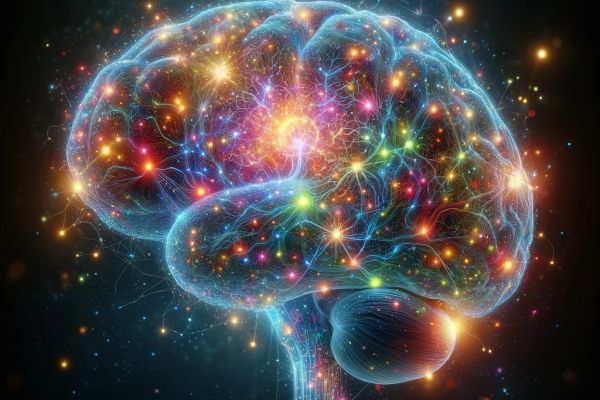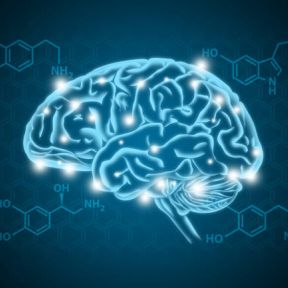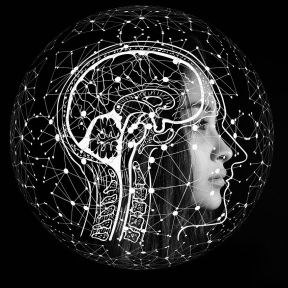How the Brain Develops
Before a person is even born, the brain has undergone intense expansion and growth in its complexity. This dramatic development continues into the first years of childhood. After an early boom period, a process of refinement and reduction sets in: childrens' and adolescents' brains respond to their life experiences and the world around them, and the most-used connections between brain cells are strengthened while others are pruned.
While the brain typically reaches a mature state of development in early adulthood, the internal processes that make and remake the brain—the birth of new neurons and death of old ones, the creation and dissipation of neural connections, and more—persist across the lifespan. At most any age, the brain retains the capacity to change.
On This Page
The process of brain development through childhood and into adulthood is far from straightforward, with change happening at different rates in different parts of the brain. But there are some major trends in the construction and remodeling that take place:
- Rapid growth in the womb: By the last trimester of pregnancy, a fetus’s brain undergoes major increases in size, folding of the brain’s brain’s outer layer (cortex), and the development of connections between neurons. The brain begins to develop its wrinkled outer surface. Major long-range signaling pathways made up of white matter begin to form several months into gestation and establish themselves by birth.
- The first years: Brain volume doubles in the first year of life as connections between neurons grow and other developmental processes unfold—including myelination, which boosts signaling speed between neurons. White matter pathways between spaced-apart regions of the cortex develop. Brain volume continues growing in the second year (an estimated 15 percent).
- Developmental peaks in childhood: The brain grows more gradually, with brain size peaking around age 10 for girls and age 14 for boys. The density of synapses in the brain reaches its height and begins to decrease. The areas of the cortex involved in movement and sensation reached maturity earlier than those involved in executive control, such as the prefrontal cortex, which will continue developing into adulthood. Brain areas beneath the cortex (such as those in the limbic system) exhibit relatively little change.
- A transition period during adolescence: In teen brains, gray matter in the cortex thins considerably. The number of synapses between neurons in the cortex is scaled back. This process of selective pruning is affected by the environment and helps make adolescence a time of particular susceptibility to outside influence. Studies find that some structures beneath the cortex (such as the amygdala and hippocampus) increase in volume, while others (such as the striatum) are reduced.
- Approaching maturity in early adulthood: Grey matter volume in the cortex continues to decrease in early adulthood, leveling out in a person’s 20s. White matter volume continues to increase. The prefrontal cortex, involved in planning and other executive functions, is still developing into early adulthood (with changes such as synaptic pruning), later than a number of other brain areas.
No. While scientists have observed general trends, there is considerable variation between individuals in terms of when and to what extent aspects of the brain change. Individual differences in brain development can be related to psychological differences. For example, researchers have related measures of intelligence to patterns of cortical thickening and thinning in certain brain areas (including parts of the prefrontal cortex) during childhood and adolescence.
An individual’s genes are a key factor affecting how the brain develops throughout early life. Genes contribute to normal individual variation in brain development, and relatively rare genetic alterations can lead to neurodevelopmental conditions such as Down syndrome due to their impact on the brain. There are also many known environmental factors that can affect a brain’s development. Starting in the womb, adequate nutrition can help ensure healthy brain development, while exposure to certain infections or toxins (such as alcohol) can lead to abnormalities in brain development. In childhood, a safe and nurturing environment facilitates proper growth, while trauma or other severe adverse experiences, as well as exposure to toxic substances such as lead, may negatively impact the brain’s development.
In the first weeks after birth, brain volume is typically about a third of what it will be in adulthood. By age 3, it will have expanded to about 80 percent of adult size. While most of the brain’s neurons are thought to be created before birth, an explosion in neural connections, the myelination of axons, and other developments boost its total volume. Research indicates that the brain keeps growing until mid to late childhood, then decreases through the early 20s, stabilizes in size for a time, and starts to decrease further around age 40.
Neurogenesis is the process by which new neurons are created. During neurogenesis, stem cells become non-specialized neural progenitor cells, which in turn produce specific kinds of neurons. The bulk of neurogenesis happens during the prenatal period of brain development, though new brain cells are made in certain areas of the brain throughout a person’s life.
Following their creation, neurons must migrate to their designated areas of the brain, a process in which the structural and support cells called glia play an important role. There, they begin to form connections with other neurons. The process of forming these connections, or synapses, is called synaptogenesis. It occurs rapidly in the months before and after birth but continues well into adulthood.
The interlinking of neurons during childhood results in many more synapses than remain in the adult brain. The reduction in synapses that happens as a person grows up is thought to be adaptive: Synapses that are activated frequently are strengthened, while those that are not used grow weaker and disappear in a process called synaptic pruning. With age, many of a brain’s original neurons (possibly more than half) are themselves programmed to die as a normal part of development.
Another key process in neuronal development that begins before birth is myelination, in which proteins form layers called myelin sheaths around a neuron’s outward extension (axon). Myelin sheaths serve in large part to increase the speed with which electrical signals can be transmitted along the axon and to other neurons.
After a period of substantial adjustment during adolescence and early adulthood, the brain reaches a period of relative stability. But changes in the brain’s wiring and structure will continue to some degree throughout a person’s life. Even after it has reached its mature state, the brain is plastic, reforming parts of itself in response to an individual’s experience of the world.
Neuroplasticity (or neural plasticity) is the capacity of the brain to change in response to experience and the environment. It encompasses a range of changes in the brain’s structure, from updates to neuronal networks that reflect learning and the formation of new memories to larger structural adaptations in response to brain injury that help to preserve function. The brain is especially plastic (or changeable) early in life, but plasticity remains an essential quality of the brain throughout adulthood.
Yes. While most of the brain’s neurons are present at birth, neurogenesis (the creation of new neurons) continues in certain areas of the brain during adulthood. One major brain structure in which neurogenesis occurs in adults is the hippocampus, which plays an important role in learning and memory.
Physical activity can boost the creation of new neurons during adulthood, research suggests. While brain mass typically decreases over time in adulthood, studies have found increased retention of volume in part of the hippocampus among those who participate in sustained aerobic exercise programs.














